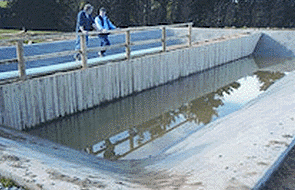
 The day had come – yes I received a letter from my dairy company explaining that they would not pick up my milk unless I had adequate effluent storage facilities in place by 31 May 2015.
The day had come – yes I received a letter from my dairy company explaining that they would not pick up my milk unless I had adequate effluent storage facilities in place by 31 May 2015.
Obviously 24 hours storage doesn’t make the grade anymore.
Over the years I had heard from many farmers who had received the same letter and what they had to do to become compliant.
As a result I decided to turn this requirement into a project which could not only help me but also the clients of my firm.
Since the 1st of June I’ve visited numerous farms in both the North and South Islands.
I’ve seen ...
- effluent ponds ranging from 700,000 litres to over 2 million
- all types of effluent storage tanks
- concrete bunkers both above the ground and below
- even research on effluent bladders
- pond stirrers
- numerous pumping systems and irrigators including travelling to K-Lines
- solids separators and weeping walls.
Along with effluent, in many instances some sort of pad is built. This may include ...
- stand off pad
- feed pad with troughs
- covered feed pad
- herd homes
Over three months I’ve become extremely knowledgeable about all the available systems.
Being an accountant though, I wondered how I could save some tax, with having to spend all of this money.
Briefly this is what we get as farmers ...
- Ponds, settling tanks or other similar improvements for the purpose of the treatment of waste products 5% p.a.
- Construction on the land of feeding platforms, feeding yards etc 10% p.a.
- Fencing 100% as deductible expenditure
- Travelling Irrigators 20% p.a.
- Irrigation Pumps 13 %p.a.
- Irrigation Piping 13% p.a.
- Rubber for wintering pad 30% p.a.
The good news is that my bank manager has been quite helpful. They had just announced a “Rural Environmental Compliance Loan”.
The interest rate for this type of loan is around 5%, about 1% lower than a 90 day BBR. This loan is up to $300,000.00 and is for a period of 5 years principal reducing. No establishment fees either! Many environmental projects are covered by this specific loan.
In the end I’ve done so much homework I’ve totally confused myself. At the end of the day I realised that I am only an accountant trying to do a farmers job.
The only way I could get a real answer to my problem was to employ a consultant specialising in this field. At least I know that’s tax deductible.
If you would like further help identifying the depreciation rates please contact me.
----------------------------------------------------------
Gavin Haddon is a director at CooperAitken Ltd, accountants in Morrinsville and Matamata. You can contact him here
We welcome your comments below. If you are not already registered, please register to comment
Remember we welcome robust, respectful and insightful debate. We don't welcome abusive or defamatory comments and will de-register those repeatedly making such comments. Our current comment policy is here.